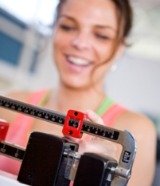Understanding the Atkins Diet Basics
Understanding the Atkins diet basics is essential to being successful at losing weight and keeping it off. Do not start using the Atkins diet before you have thoroughly studied the plan. If you don’t understand the Atkins diet basics and the philosophy behind the diet, you are being short-sighted and will be more likely to give up before you’ve really come to use the Atkins Diet properly.
The Basic Atkins Diet Philosophy
The basic philosophy of the Atkins diet is that it isn’t truly a “diet” in the traditional sense of the word. Yes, you can lose weight on the Dr. Atkins diet plan, but it is far more than that. The Atkins diet is revolutionary because you aren’t just using it to shed pounds, then going off of it. It is a complete lifestyle choice that you can use for the rest of your life to maintain the proper weight and be healthier and happier.
You may be put off by the idea of being “on Atkins” for life, but it’s not like being on a diet for the rest of your life at all. Instead, because there are four basic and distinct phases to the Atkins diet plan, you move beyond dieting and to a maintenance plan that you can use the rest of your life without ever feeling like you are restricting yourself. It’s actually simply a way of “eating smart,” not of depriving yourself.
The Induction Phase

The first phase of the Dr. Atkins diet plan is Induction. This is the phase that is most restrictive, but it only lasts a few weeks for most people. The purpose of starting the Atkins diet with the restrictive induction phase is to basically re-set your body’s metabolism so that it begins burning body fat as fuel rather than relying on carbohydrates that you eat.
During the basic or induction phase of the Atkins diet, you will eat meats, cheeses and plenty of selected vegetables and salads. It restricts carbohydrates to less than 20 grams per day. You can still eat plenty of food and you won’t feel starved because your body will quickly enter into a state called “ketosis” where the body is burning fuel more efficiently and using your own body fat – so you’ll feel less need to fill up with carbs for energy.
Ongoing Weight Loss Phase
The second phase, Ongoing Weight Loss, is when you can start adding a small amount of additional low carb foods. The first week, you move up to 25 grams a day and stay there for a week or two to see how the Atkins diet works for you. Each week after that, add 5 grams of carbohydrates a day until you see that your weight loss has stalled. At that point, you just cut back by 5 grams a day and you should see steady, slow weight loss.
At this point, your weight loss will be slightly slower than during Induction, but can still lose 5-8 pounds a month. This can be a healthy, moderate weight loss pattern.
Pre-Maintenance Phase
During the third phase, Pre-Maintenance, your goal will be to slow the weight loss as you approach your goal weight. You can now add up to 10 grams a day each week until you see that you’ve reached a plateau.
During pre-maintenance you will see that you’ve been able to add some of your favorite carbohydrates in moderation. This is the key to following the Atkins diet basics properly – coming to understand that you can be low carb without being no carb. This phase gears you up for the final phase.
Lifetime Maintenance
Lifetime Maintenance is the Atkins diet phase that becomes your way of life after you’ve achieved the weight loss you want. By the time you reach maintenance, you should have a good basic understanding of what you should focus on when dining for the rest of your life. It’s a simple philosophy – nutrient-dense, low carb foods and plenty of water for a healthier body and more energy. It is basically about limiting the bad foods and balancing the rest – it’s not about giving things up entirely or about counting calories, so it’s easy to maintain for the rest of your life.
Lifetime maintenance is the most important of the Atkins diet basics. It is about not overdoing it on pastas, refined wheat products and sugars so that your body doesn’t come to rely on them again for fuel. It’s a way to basically keep yourself healthy and fit (and not overweight!) for the rest of your life without dieting.
Is the Atkins Diet Safe?

Why Some Doctors are Against the Atkins Diet
The 4 Phases

The Complete Atkins Induction Diet Food List
Success Stories

Share Your Atkins Success Story


